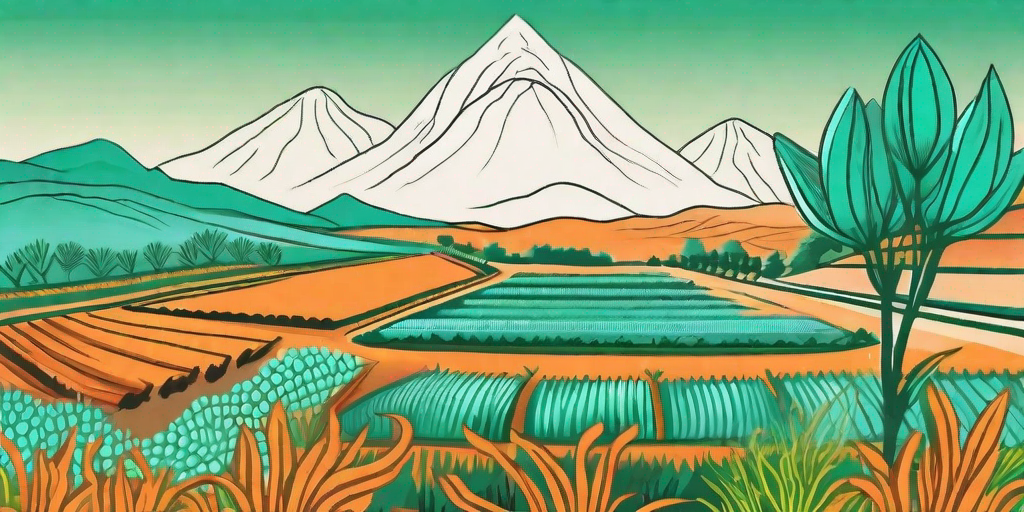
Welcome to a world of golden hues, rich aromas, and a spice that's worth its weight in gold. We're talking about saffron, the world's most expensive spice. But what makes this tiny red thread so special? Let's embark on a journey to uncover the golden secrets of the saffron plant.
A Brief History of Saffron
Our journey begins in the annals of history. Saffron has been coveted for thousands of years, with its use dating back to ancient civilizations. The Sumerians used it as a magic potion, the Egyptians as a perfume, and the Romans as a delectable spice. It's like the Swiss army knife of the ancient world!
But where did it originate? While some believe it was first cultivated in Iran, others argue that it was Greece. The truth is, we may never know. What we do know is that saffron has left an indelible mark on the culinary and cultural landscapes of many countries.
The Silk Road and Saffron
The Silk Road, a network of trade routes connecting the East and West, played a pivotal role in the spread of saffron. It was like the Amazon Prime of the ancient world, delivering saffron to eager customers across continents. This led to the integration of saffron into the cuisines and cultures of various regions.
From the saffron-infused paella of Spain to the golden biryanis of India, saffron has found a home in the hearts and kitchens of people around the world. It's like the world's most beloved houseguest, adding a touch of luxury wherever it goes.
The Cultivation of Saffron
Now, let's get our hands dirty and delve into the cultivation of saffron. Spoiler alert: it's not for the faint-hearted. The cultivation of saffron requires patience, precision, and a whole lot of hard work. It's like the diva of the plant world, demanding constant attention and care.
Firstly, saffron is not actually a plant, but the dried stigma of the Crocus sativus flower. Each flower has only three stigmas, which must be hand-picked during the short flowering season. This labor-intensive process is what makes saffron so expensive. It's like the diamond of the spice world, with its value derived from its rarity and the effort required to obtain it.
The Harvesting Process
The harvesting process of saffron is a sight to behold. As dawn breaks, fields of purple crocus flowers bloom, revealing their precious saffron stigmas. It's like nature's own treasure hunt, with the golden prize hidden within the heart of the flower.
Harvesters must quickly and carefully pluck the stigmas, as they lose their aroma and color rapidly after picking. The stigmas are then dried to produce the saffron threads we know and love. It's a race against time and a testament to the dedication of the farmers who cultivate this golden spice.
Saffron in the Kitchen
Now that we've harvested our saffron, let's head to the kitchen. Saffron is a versatile spice, adding a unique flavor and color to a variety of dishes. It's like the secret ingredient in a magic potion, transforming ordinary ingredients into extraordinary culinary delights.
But how do you use saffron? Well, it's all about balance. Too little, and its flavor will be lost. Too much, and it can overpower the dish. It's like the Goldilocks of spices, requiring just the right amount to shine.
How to Use Saffron
Before using saffron, it's important to activate its flavor. This can be done by soaking the threads in a warm liquid, such as water, broth, or milk. This releases the saffron's aroma and color, creating a rich infusion. It's like waking up a sleeping beauty, with the warm liquid acting as the prince's kiss.
Once activated, saffron can be added to a variety of dishes. From risottos and paellas to desserts and teas, saffron adds a touch of luxury to any dish. It's like the Midas touch of the culinary world, turning everything it touches into gold.
FAQs About Saffron
- Why is saffron so expensive?
- Saffron is expensive due to its labor-intensive cultivation process. Each saffron thread is the stigma of a crocus flower, which must be hand-picked and dried.
- What does saffron taste like?
- Saffron has a unique taste that is hard to describe. It's slightly sweet, slightly bitter, and has a complex flavor profile that adds depth to dishes.
- How should I store saffron?
- Saffron should be stored in an airtight container in a cool, dark place. Proper storage will help maintain its flavor and color.
So there you have it, the golden secrets of the saffron plant. From its rich history to its cultivation and culinary uses, saffron is truly a spice like no other. It's the golden thread that weaves through our culinary and cultural tapestry, adding a touch of luxury and a dash of magic. So the next time you sprinkle saffron into your dish, remember the journey it's taken to get to your plate. Bon appétit!











